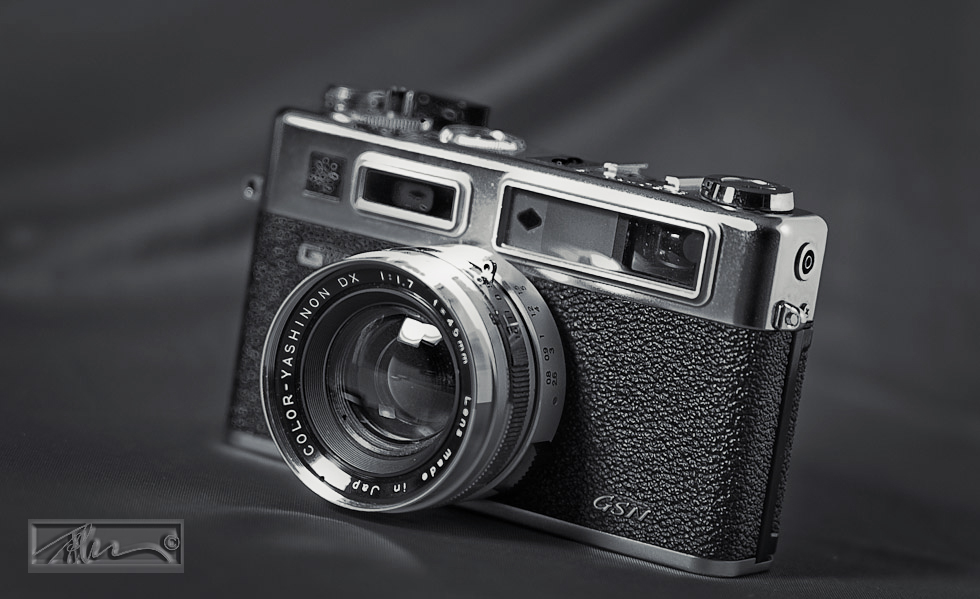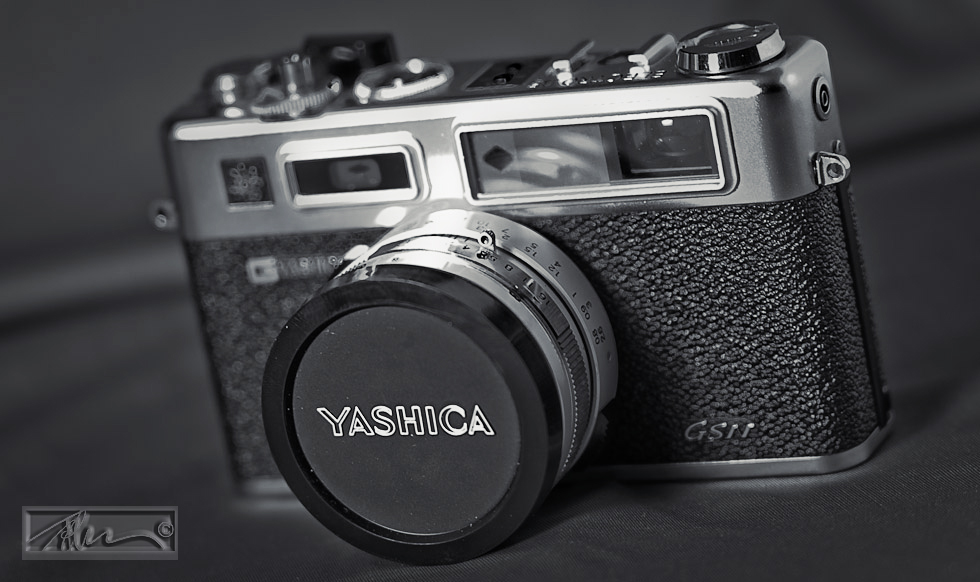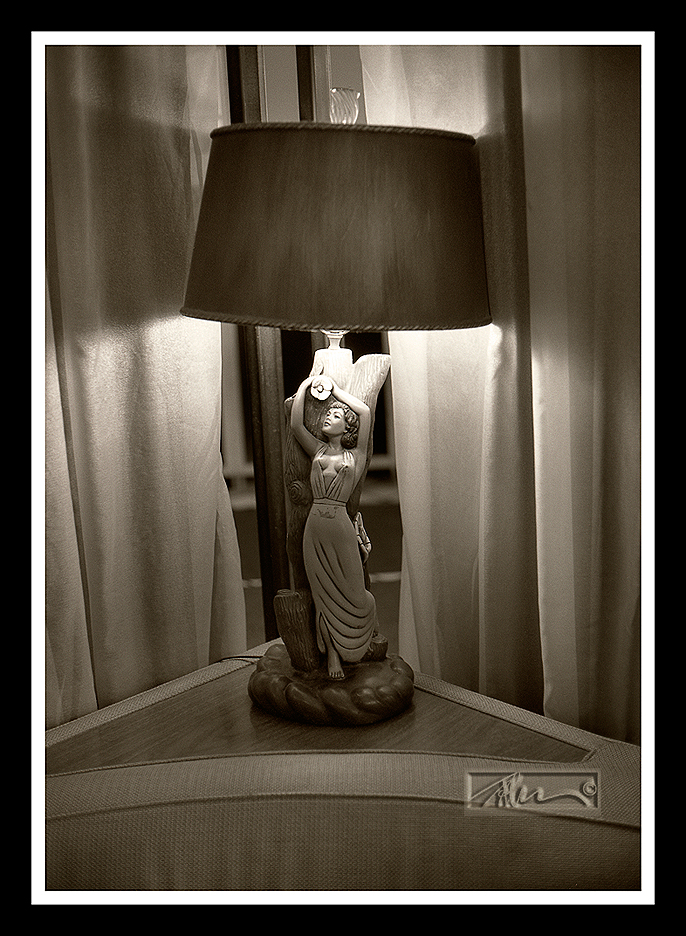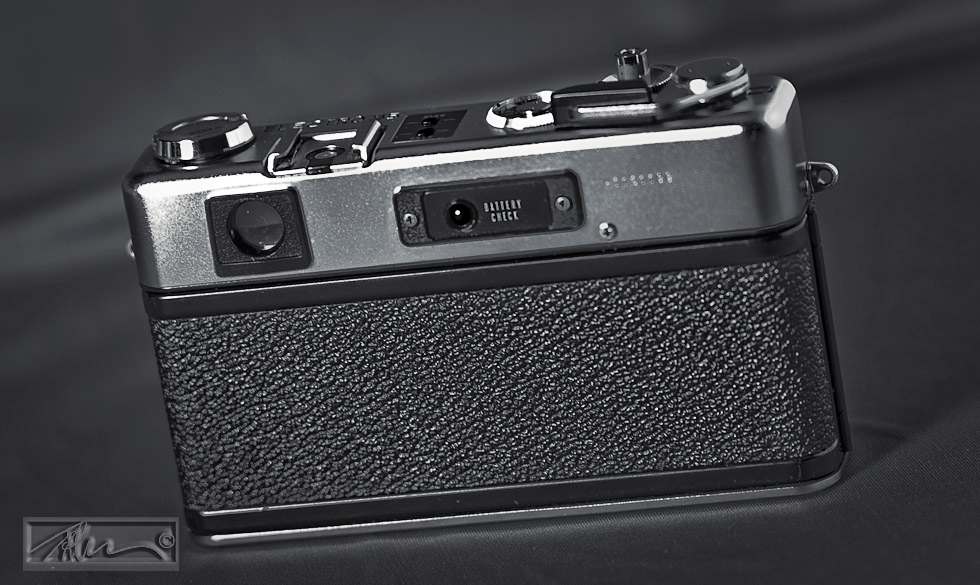During the 1960-1970’s there was a company that made some pretty amazing cameras. One of which was considered by some as – “A poor man’s (or woman’s) Leica”.
Yashica began making cameras and lenses after WWII in Nagano, Japan as the Yashima Seiki Company. Over the years, they made some pretty astounding cameras. One of their best-known cameras was a knockoff of the famous Rolleiflex TLR.
However, one of their most successful cameras was the Yashica Electro 35. Yashica made and sold millions of them. The first models were simply known as the Electro 35. later, as film speeds became faster there were a few slight design changes that produced the GT, the GTN and the GSN. The camera was basically unchanged except for the addition of a flash shoe, the word color on the lens and a body color of either satin chrome on the GSN and black paint on the GTN. All of the Electro 35 models functioned exactly the same. Although functionally identical, the black GTN was considered to be the professional version.
One of the beautiful features of this amazing rangefinder camera, and there were many, was its fixed 45-mm Yashinon f/1.7 lens. This Japanese produced lens had incredible sharpness and was rather bright for an inexpensive rangefinder. Most of the competition was f.2 or smaller. The fast f/1.7 could be used handheld in relatively dim lighting.
The Yashica Electro was I believe, the first electronically controlled camera. It was an aperture priority system, which automatically controlled the shutter during exposure. The camera is meant to be used as an automatic with the exception of a bulb setting and a flash setting. It was the predecessor of the modern electronic camera, which ultimately led us to cameras that are now fully electronic.
Almost every Electro 35 that I have ever run across looks like a new camera. That is true at least for the chrome versions. The black paint on the GT wears off with hard use. But for some reason, the chrome finish seems to defy time and usage. All of the ones I have owned look the same today as when they were first purchased. If you want to have a great looker without tarnish, the chrome models are amazing. Even in eBay listings, people who sell them claim that they look like new. Unlike most other cameras of the period, even the leather cases appear as new.
Please read – Disclosure
I suggest reading up about them before buying anything. there are a few things that you should be careful of when you buy. Ken Rockwell has all the skinny about what to look for, batteries and other tidbits of information. For those interested, there are plenty of other websites that also offer information about these great cameras.
The Electro 35 sold originally for around a hundred US dollars. Today, to find a working example, you can pay anywhere from 40-150 on eBay. If you are lucky, you can find them at garage sales and second hand stores for less than twenty bucks. Expect to pay more for the black GTN. For some reason, it is more expensive due to its “professional” status by collectors even though the GSN functions exactly the same. Mine are all the chrome version, which to me makes them look more nostalgic.
I love to use this camera. like the other cameras I have collected, it revives the film shooter in me and returns me to another period of my photographic life.
Around ones neck, it is a wild looking piece of vintage photographica. Besides its good looks, it is very easy to use. The design reeks of 1960-70’s atomic retro styling. There are red and yellow flashing lights used to warn of light levels, which remind me of some of the toy robots I had as a kid. There is even a distinctive if not kitschy atomic logo on the front. After all, the world was atomic powered and we were in a cold war. It makes for a great conversation piece and most people are not afraid of its funky looks.
By comparison, the Yashica is certainly not a Leica. However, it was a very reasonably priced and for many, it served as an alternative to the more sophisticated offerings from German and Japanese makers. While the Yashica has its own charm, it is a bit clunky by Leica standards. Yet, the camera satisfied the image requirements of many image-makers who just could not afford the more expensive German or Japanese craftsmanship.
If you can find a good working Electro 35, you might just like the idea of going back in time with a few rolls of good old film. It can become a worthy addiction and a great way to make images. Many photographers still use their vintage Yashica cameras for street photography and as everyday picture shooters. Not everyone wants to shoot digital all the time. Film is a very different experience. I would suggest a roll of Kodak Portra 160 or maybe a roll of Ilford HP5. Both are great films and are still being produced today. You can also find plenty of old but still usable film on eBay. While it is getting a little harder to find a place that will develop a roll, it can still be worth your efforts. You can also try developing it yourself. It really isn’t that difficult to do.
The Yashica Electro 35 GSN is one of my all time favorites. For me, it is a reminder of what photography was like when I was growing up. In my opinion, the YE35 is a keeper. It is also a great user for those so inclined.
Related posts:
- Collecting Old Folding Cameras – A few from my collection
- The Argus C3 – “The Brick”
- I Love Vintage Cameras
Read about my book Rethinking Digital Photography.
Please have a look at some of my other posts here.
NOTICE of Copyright: THIS POSTING AS WELL AS ALL PHOTOGRAPHS, GALLERY IMAGES, AND ILLUSTRATIONS ARE COPYRIGHT © JOHN NEEL AND ARE NOT TO BE USED FOR ANY PURPOSE WITHOUT WRITTEN CONSENT FROM THE WRITER, THE PHOTOGRAPHER AND/OR lensgarden.com. THE IDEAS EXPRESSED ARE THE PROPERTY OF THE PHOTOGRAPHER AND THE AUTHOR.





